Abstract
1. A kangaroo hopping above a certain speed appears to consume less oxygen than a quadrupedal mammal, of similar weight, running at the same speed (Dawson & Taylor, 1973). This is thought to be achieved by storage of elastic energy in tendons and ligaments. 2. Energy can be stored in a tendon by stretching it, but only if the muscle fibres in series with it are stiff enough to resist most of the length change. We have measured length and tension changes in the contracting gastrocnemius muscle of the wallaby Thylogale during rapid, controlled stretches, and from this determined the amount of movement in muscle fibres and tendon (method of Morgan, 1977). 3. When the muscle was developing close to its maximum isometric tension, up to eight times as much movement occurred in the tendon as in the muscle fibres. This is made possible by the wallaby having a long and compliant tendon. 4. Measurement of work absorption by the muscle with a full length of free tendon and when the tendon had been shortened, showed that with the shortened tendon a larger proportion of movement occurred in the muscle fibres, producing a steep rise in work absorption by the muscle and a consequent increase in energy loss.
Full text
PDF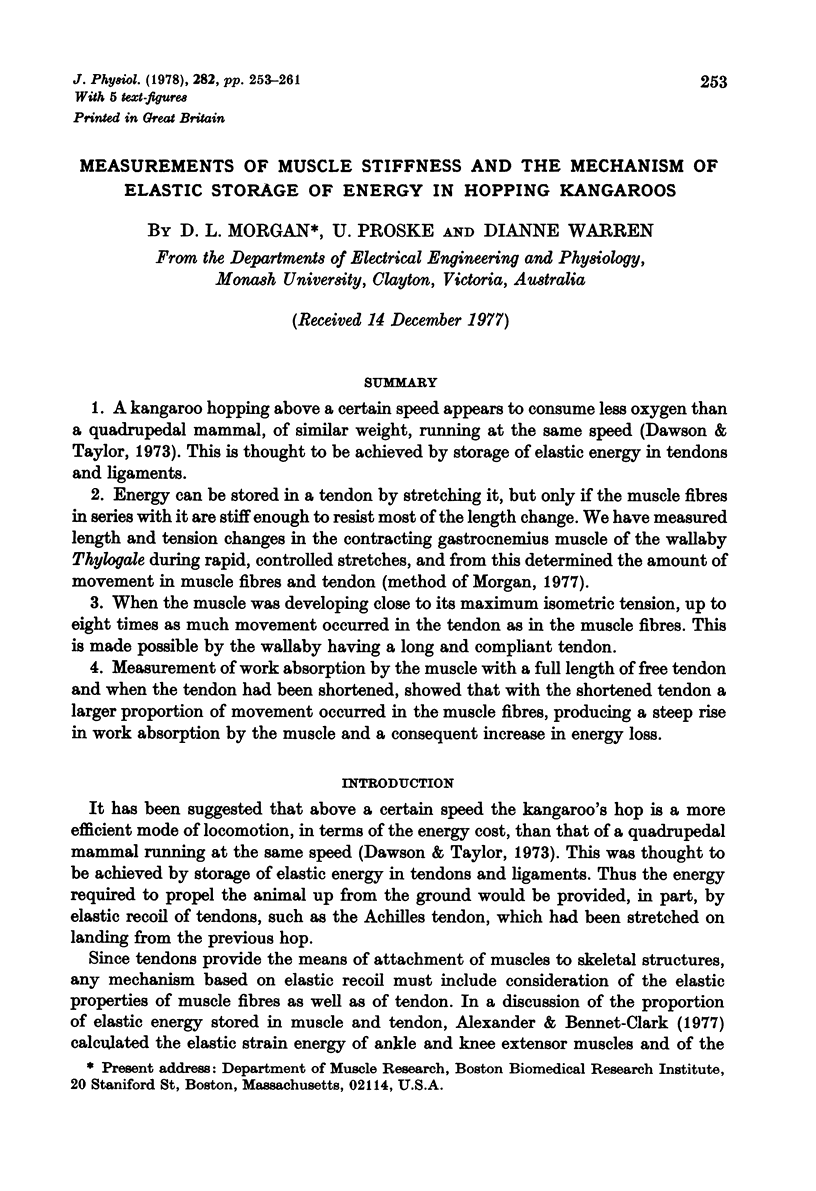
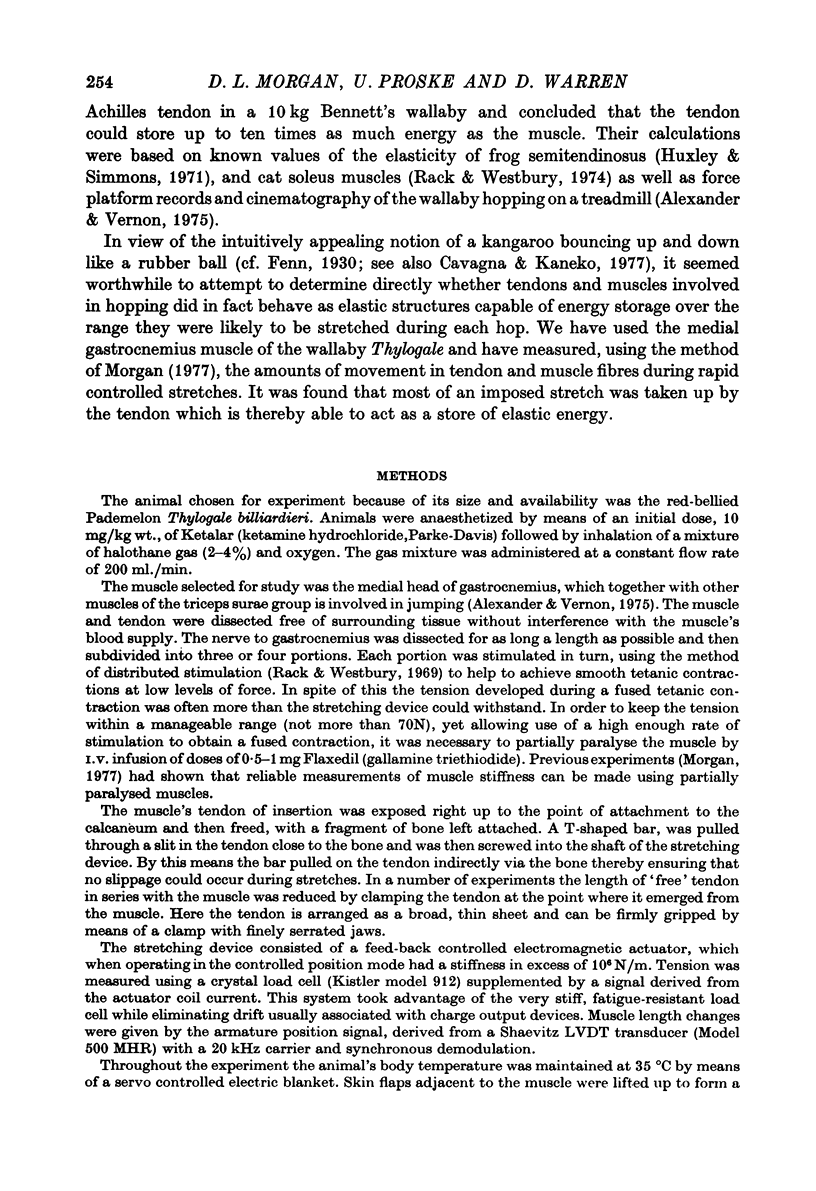
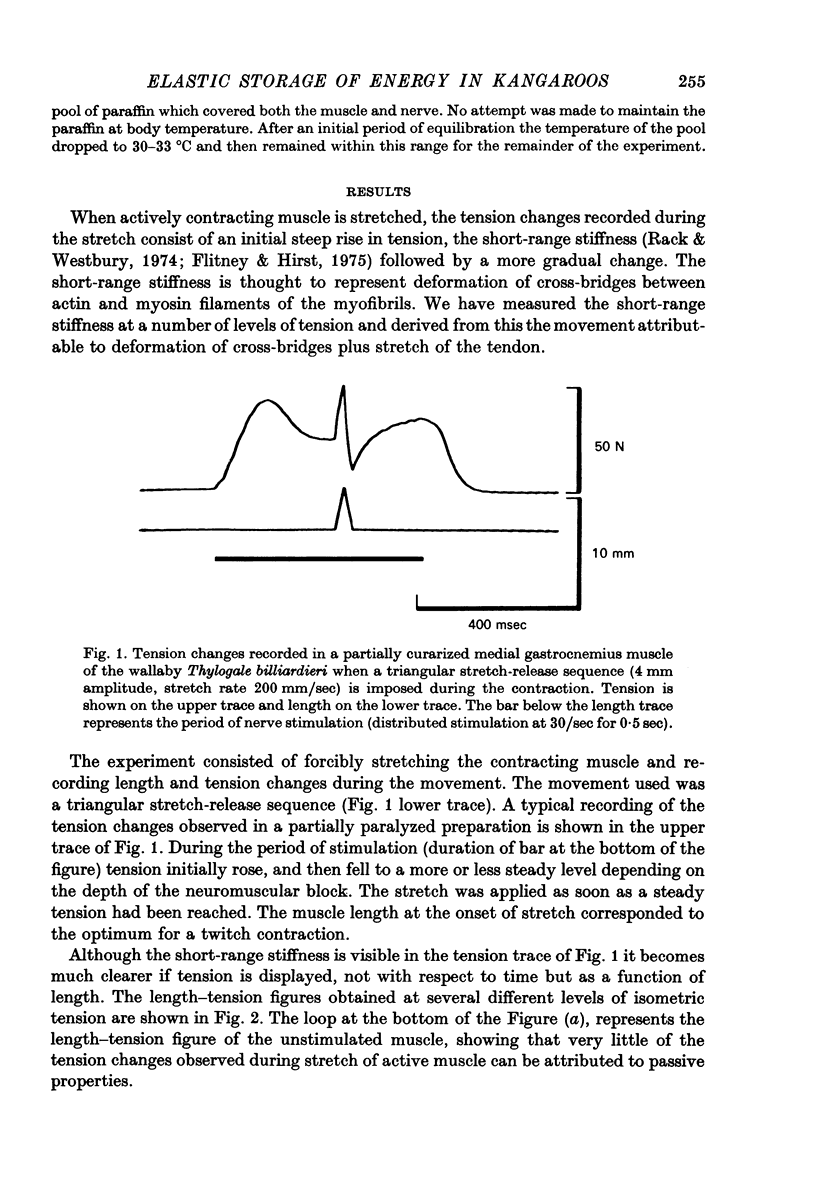
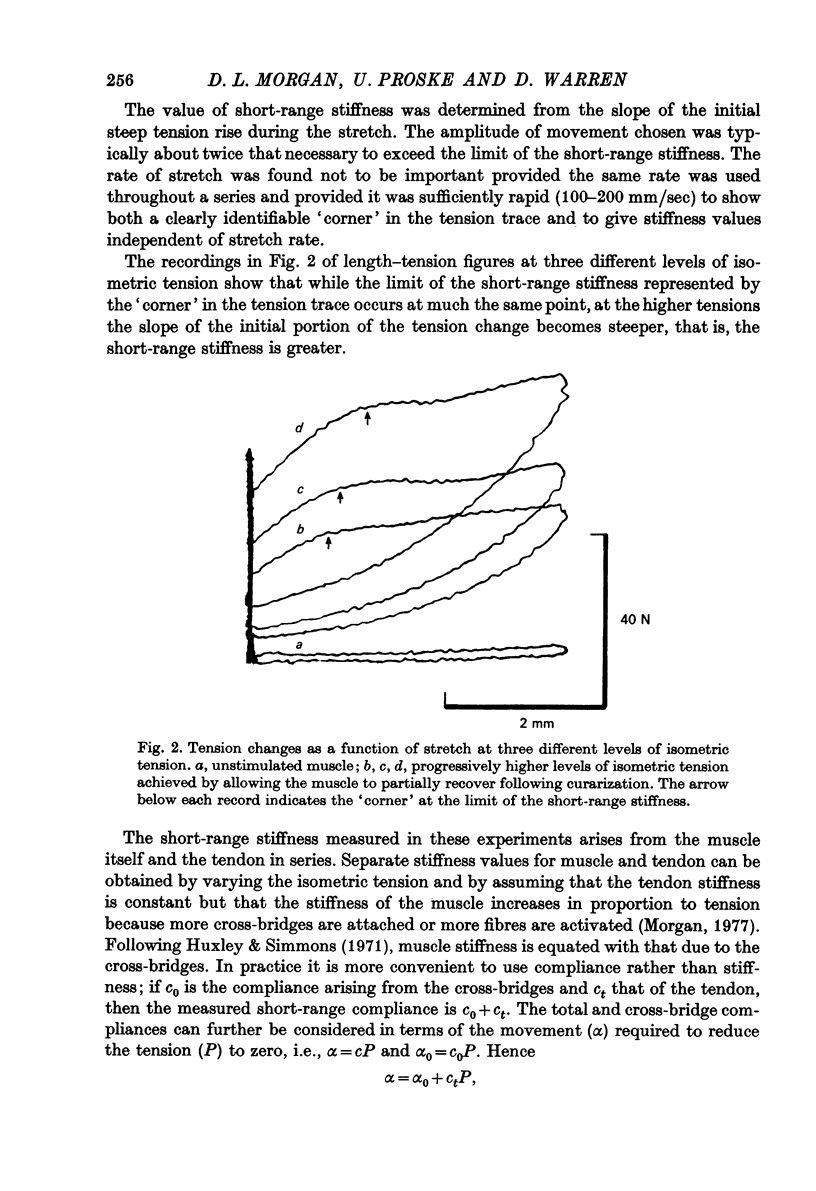
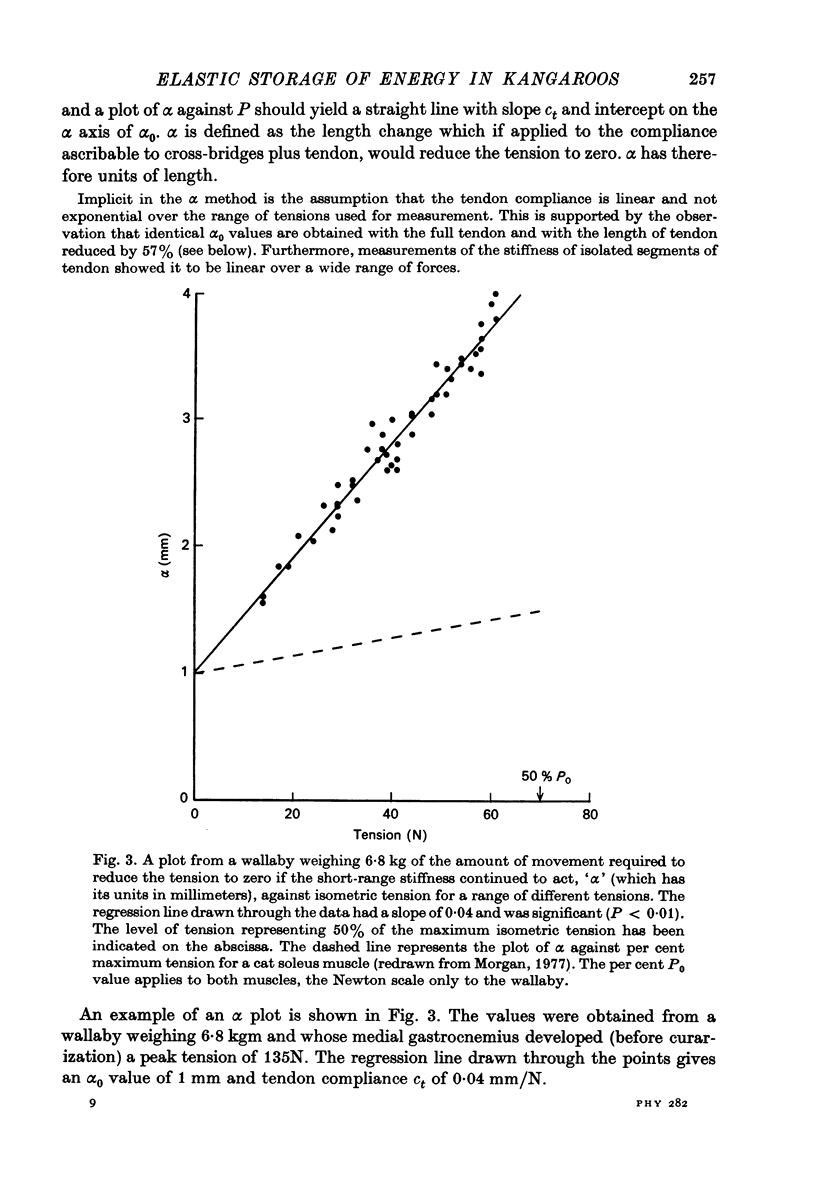
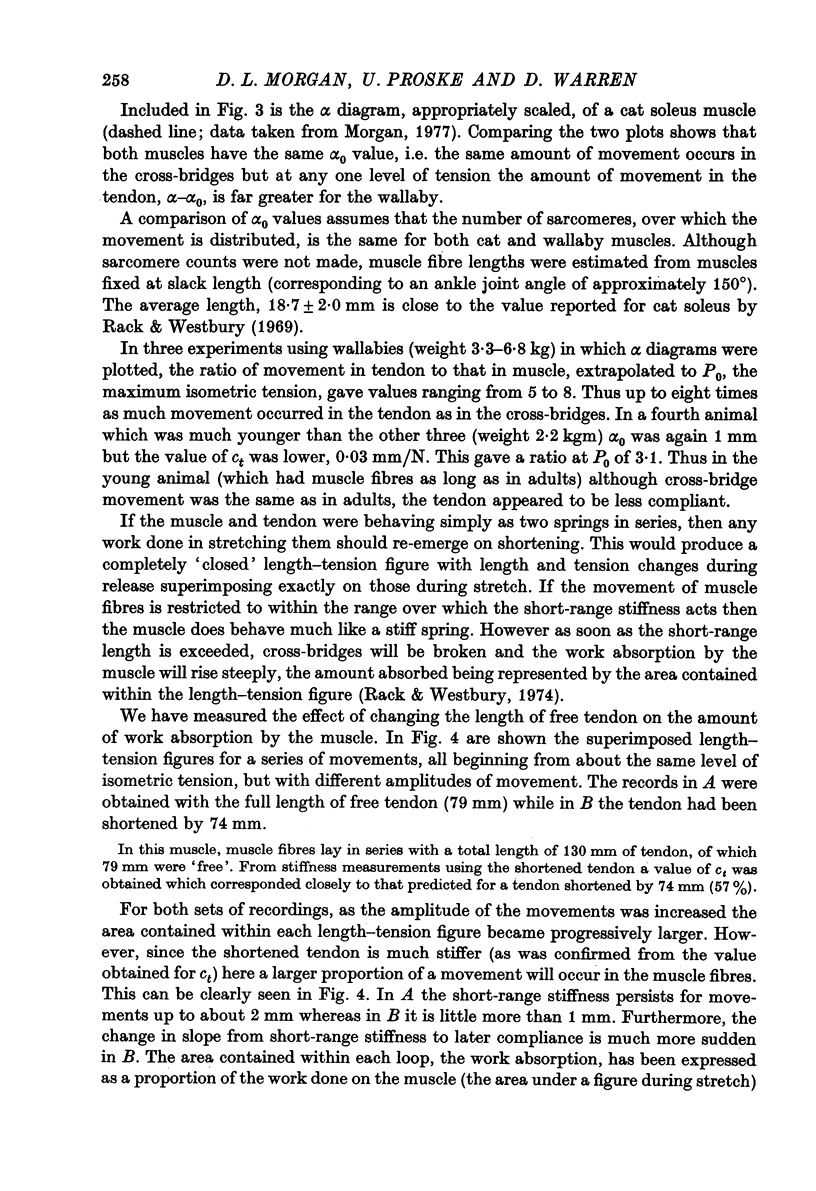
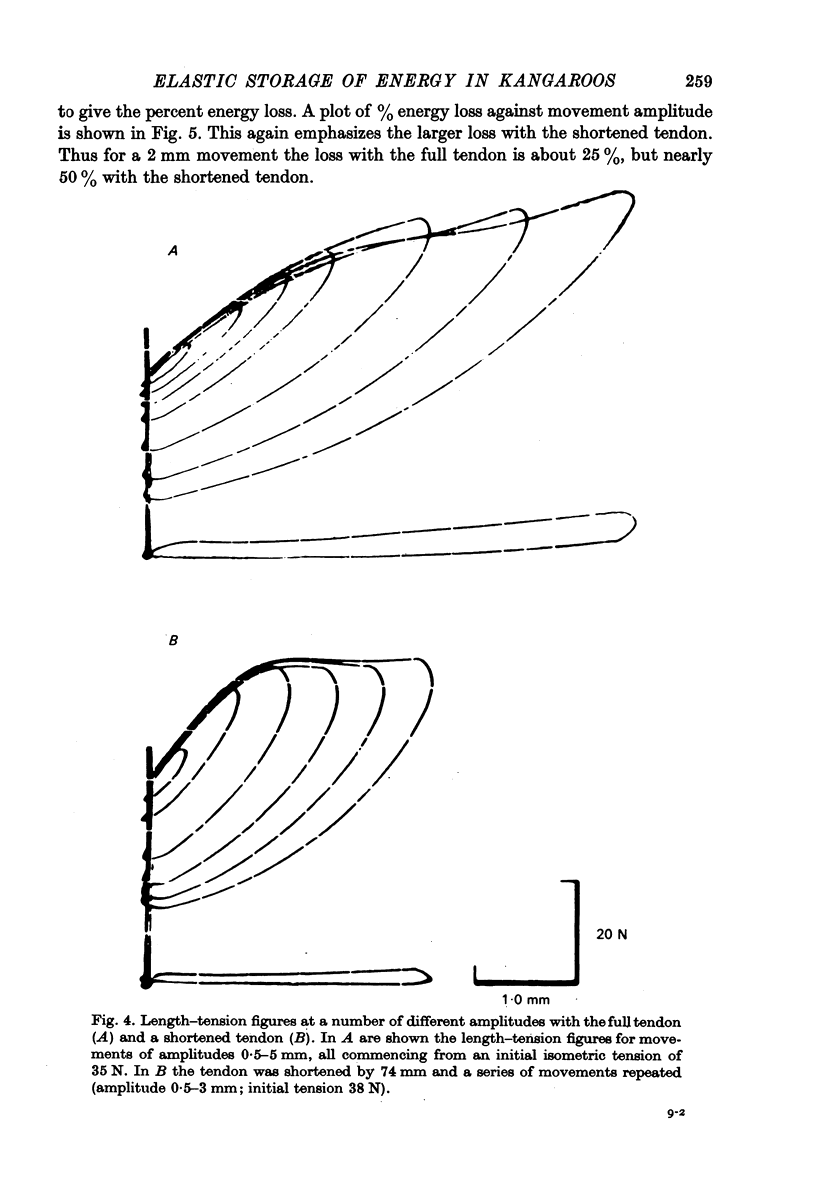
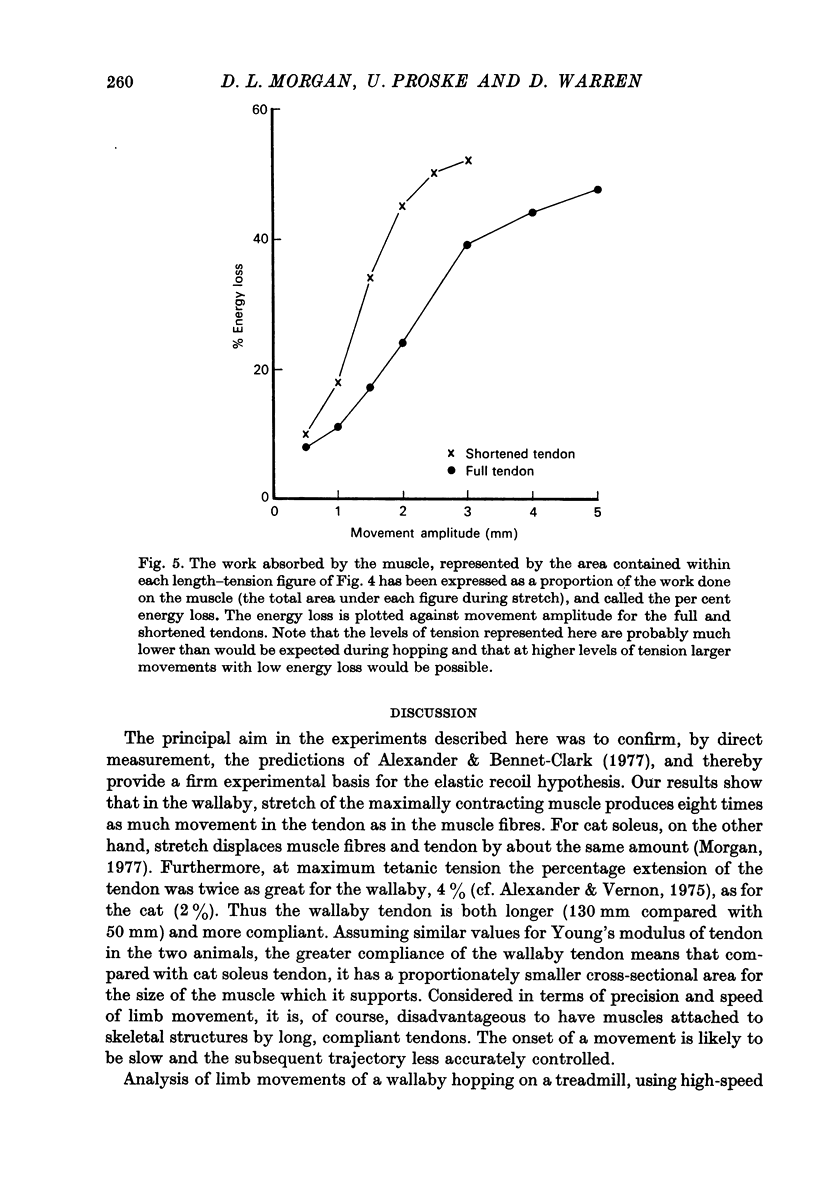
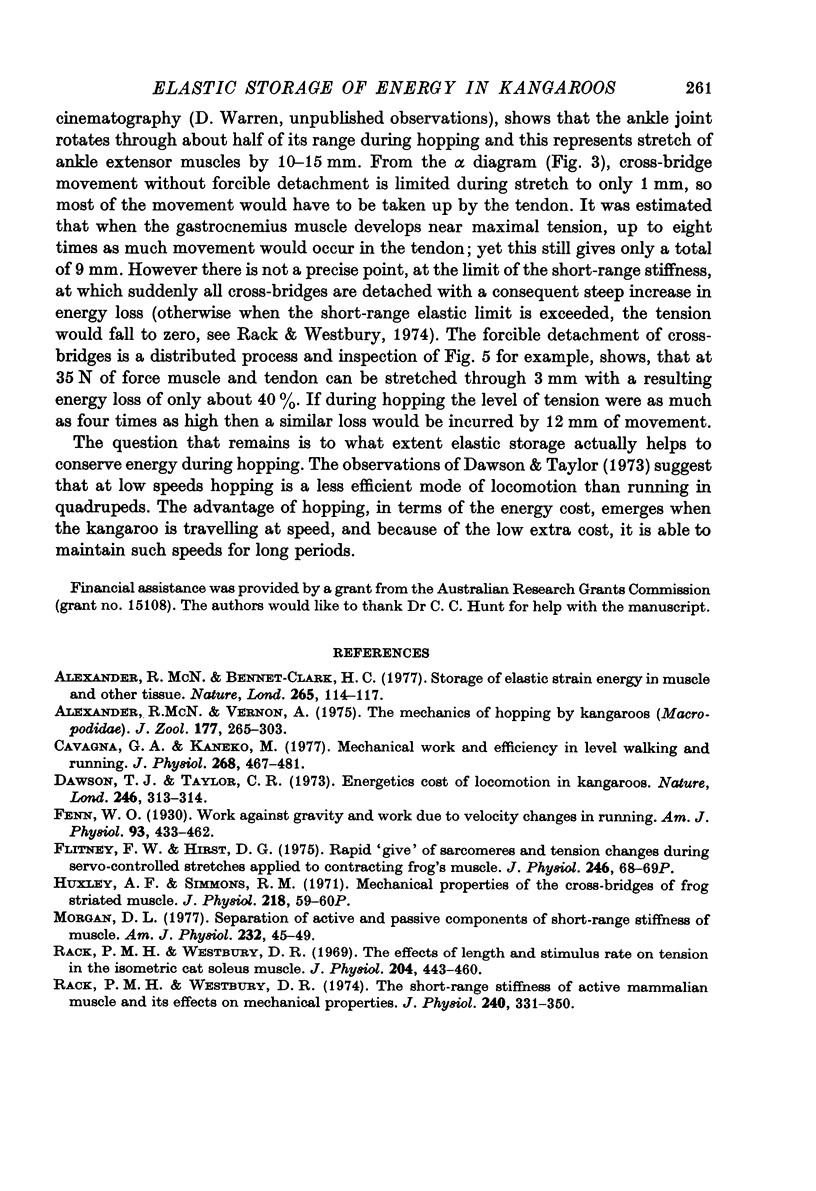
Selected References
These references are in PubMed. This may not be the complete list of references from this article.
- Alexander R. M., Bennet-Clark H. C. Storage of elastic strain energy in muscle and other tissues. Nature. 1977 Jan 13;265(5590):114–117. doi: 10.1038/265114a0. [DOI] [PubMed] [Google Scholar]
- Cavagna G. A., Kaneko M. Mechanical work and efficiency in level walking and running. J Physiol. 1977 Jun;268(2):467–-81. doi: 10.1113/jphysiol.1977.sp011866. [DOI] [PMC free article] [PubMed] [Google Scholar]
- Huxley A. F., Simmons R. M. Mechanical properties of the cross-bridges of frog striated muscle. J Physiol. 1971 Oct;218 (Suppl):59P–60P. [PubMed] [Google Scholar]
- Rack P. M., Westbury D. R. The effects of length and stimulus rate on tension in the isometric cat soleus muscle. J Physiol. 1969 Oct;204(2):443–460. doi: 10.1113/jphysiol.1969.sp008923. [DOI] [PMC free article] [PubMed] [Google Scholar]
- Rack P. M., Westbury D. R. The short range stiffness of active mammalian muscle and its effect on mechanical properties. J Physiol. 1974 Jul;240(2):331–350. doi: 10.1113/jphysiol.1974.sp010613. [DOI] [PMC free article] [PubMed] [Google Scholar]


